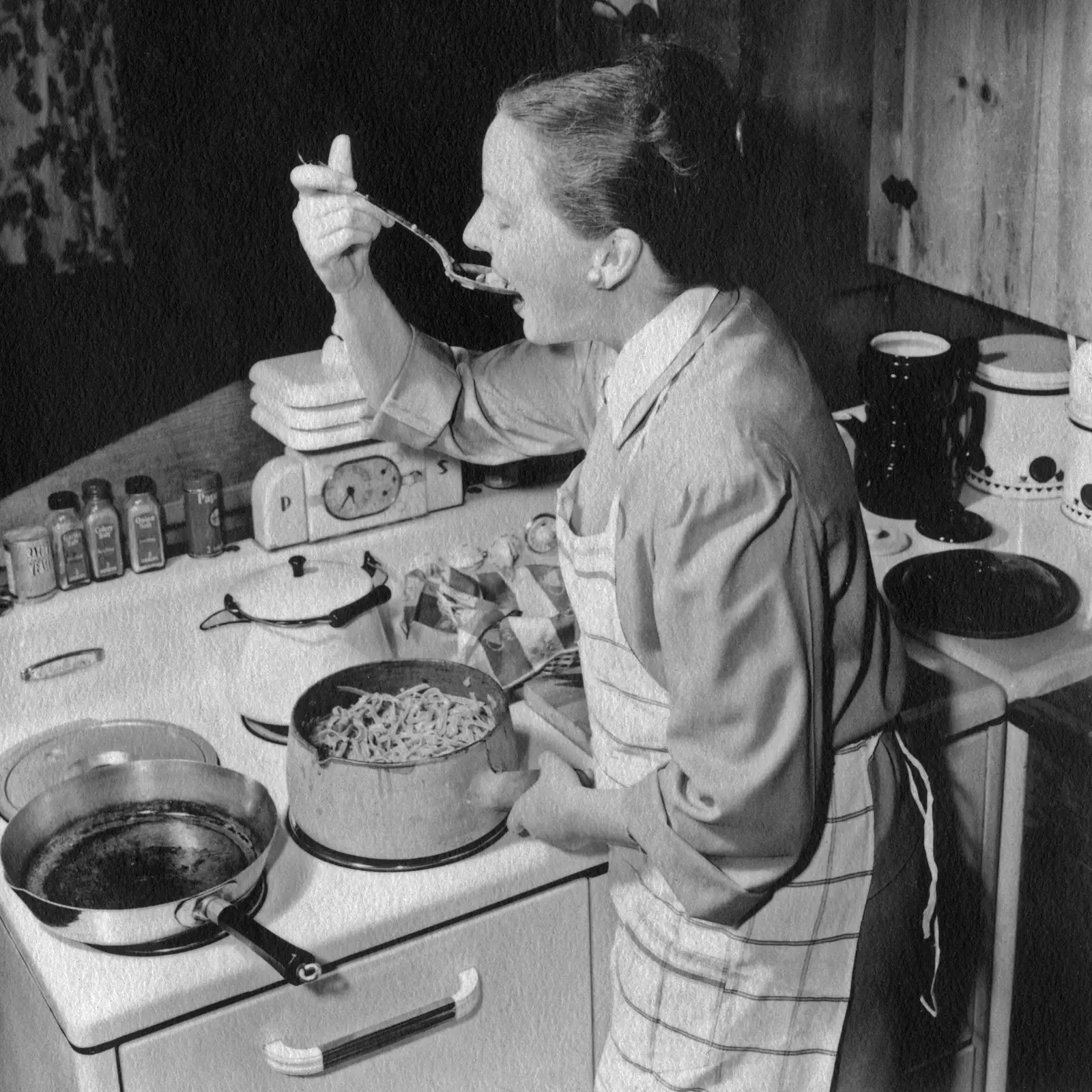
Mary Frances Kennedy Fisher
She was born in 1908 in Michigan, in a well-to-do home . She had the opportunity to study, to travel, to try as much as a kid without fuss, to fire husbands with that security that well-written clauses grant. And love.
In France, from the hand of the verb to compare -not always as hateful as they say it is-, Mary Frances Kennedy Fisher she threw herself into the knowledge of meats, fish, wines and spirits amortizing to the maximum each student franc. She tried tripes à la mode de Caen, snails, quenelles, sauces that made her understand why food was an art and a religion for the French. “ And I am already his fervent disciple ”, She wrote to her sister in that decade of the 30s in which the war was still a mirage.
Perhaps from all this she drew the courage to build herself independently, to write at dawn with her daughters about the things of eating and making literature of it . For she aroused the suspicion of men by entering a restaurant alone and allowing herself to say out loud that she was hungry.
"I'm hungry!".
Thus, with the naturalness with which children say it.
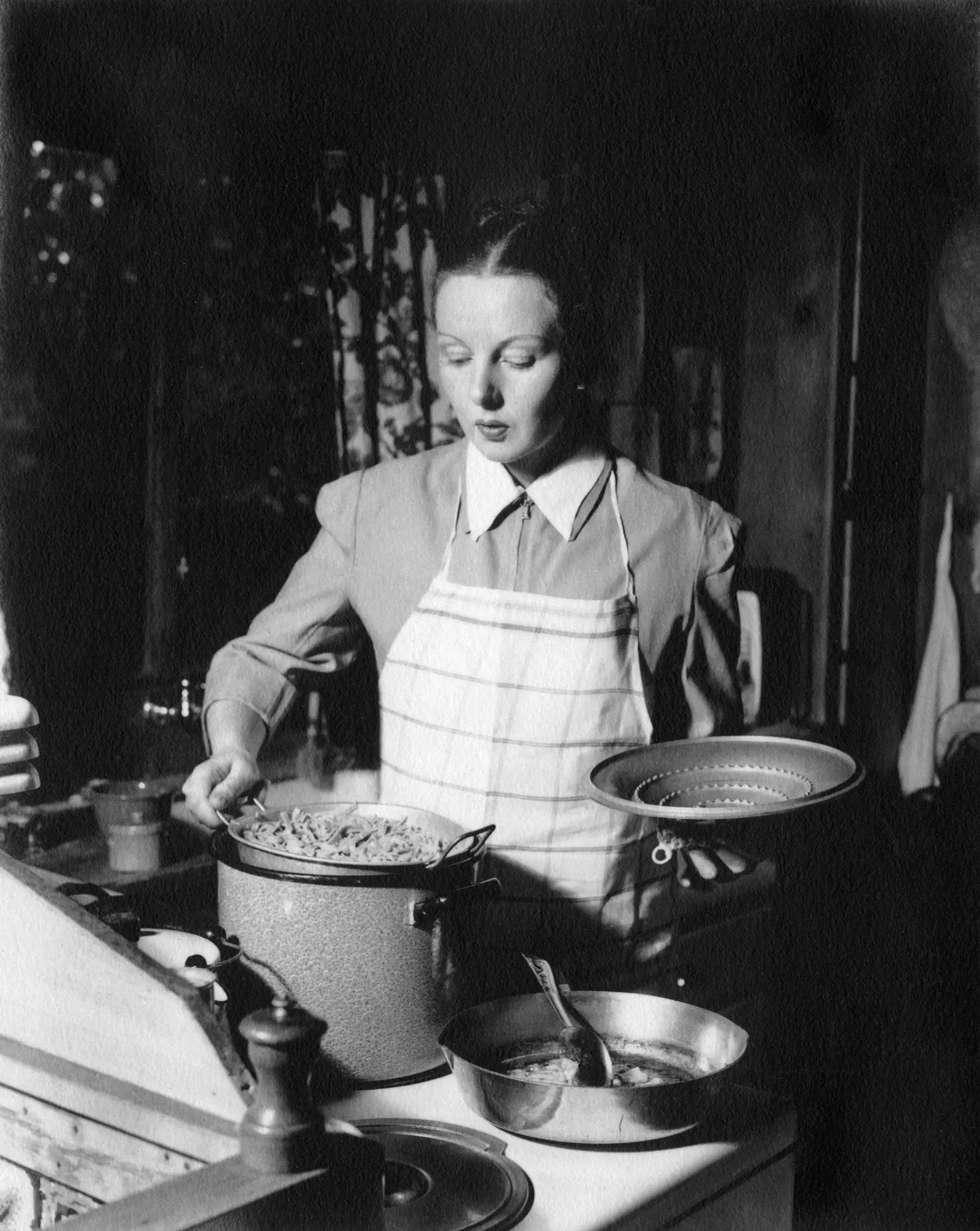
Mary Frances Kennedy Fisher
She returned to the US when the mirage of war materialized. Resources were scarce and an entire middle class faced hunger for the first time -The lower classes are born knowing how to survive-. The government and magazines instructed housewives on how to stretch dollars in the kitchen while each proposed her version of a balanced diet -unfeasible and insipid- that did nothing but confuse a whole generation of cooks, wives, mothers, who wanted to achieve the ideal of perfection. The accounts didn't add up to her pantry. Nor with what was expected of them . And Fisher gave them north, also to them, in that book that she always waits to appear at the best moment: How to cook a wolf.
Without departing from the practical sense, defended pleasure in survival . And she bequeathed a way of writing gastronomy -not only of documenting and disseminating it- from which the following generations of letters have drunk. There was a portentous 'I' in her literature that did not hide: he stayed in the rear, an observer, to explain the world and all its edges.
There were more of her like her. And, fortunately, they exist today too: gourmets who are cooks, researchers, translators, journalists, historians, farmers, sommeliers, shopkeepers, scientists, housewives… Women who sit at the table and eat.
The following are nine (eight for today's date and one more, because there is always one more) of these young gastronomes under 40 who work in Spain and who have a self that shines behind the letters they write. Because they, like their predecessors, are also hungry.
ANA LUISA ISLANDS – DIANA KENNEDY
“In Asturias, the mine is everywhere, even in people's heads ”. Read the food and travel journalist Ana Luisa Islas in the ABC newspaper or in the Ñam Ñam Barcelona project is to open up to the discovery of Spain from the lucid gaze of a Mexican woman who has been living in this country for twelve years with all her senses. Perhaps that is why she has selected Diana Kennedy, an English gastronome who ended up in Mexico for love and who, at 98, is today "the living person who knows the most about Mexican cuisine in the world".
"Because of her innate curiosity, Diana traveled throughout the country that sheltered her, discovering and discovering culinary secrets in remote villages, most of the time unaccompanied at a time when women could not be," Ana tells us. Those more than 50 years of travel have been documented in a dozen books such as The cuisines of Mexico (1972) or The Art of Mexican Cooking (1989). “There are dishes and recipes that would have disappeared were it not for their documentation. Her archive is one of the most important on Mexican cuisine in the world,” she explains.
And suddenly the image of a gastronome in unknown territory shines, like Ana herself: “It is curious that a foreigner has to come to discover the beauty of our country. And besides, like me, he didn't mince words. Kennedy is known for her outspokenness of her, because of her little desire to do politics and because, despite her age, she is tireless in her task of protecting well-made cuisine, with real ingredients”.
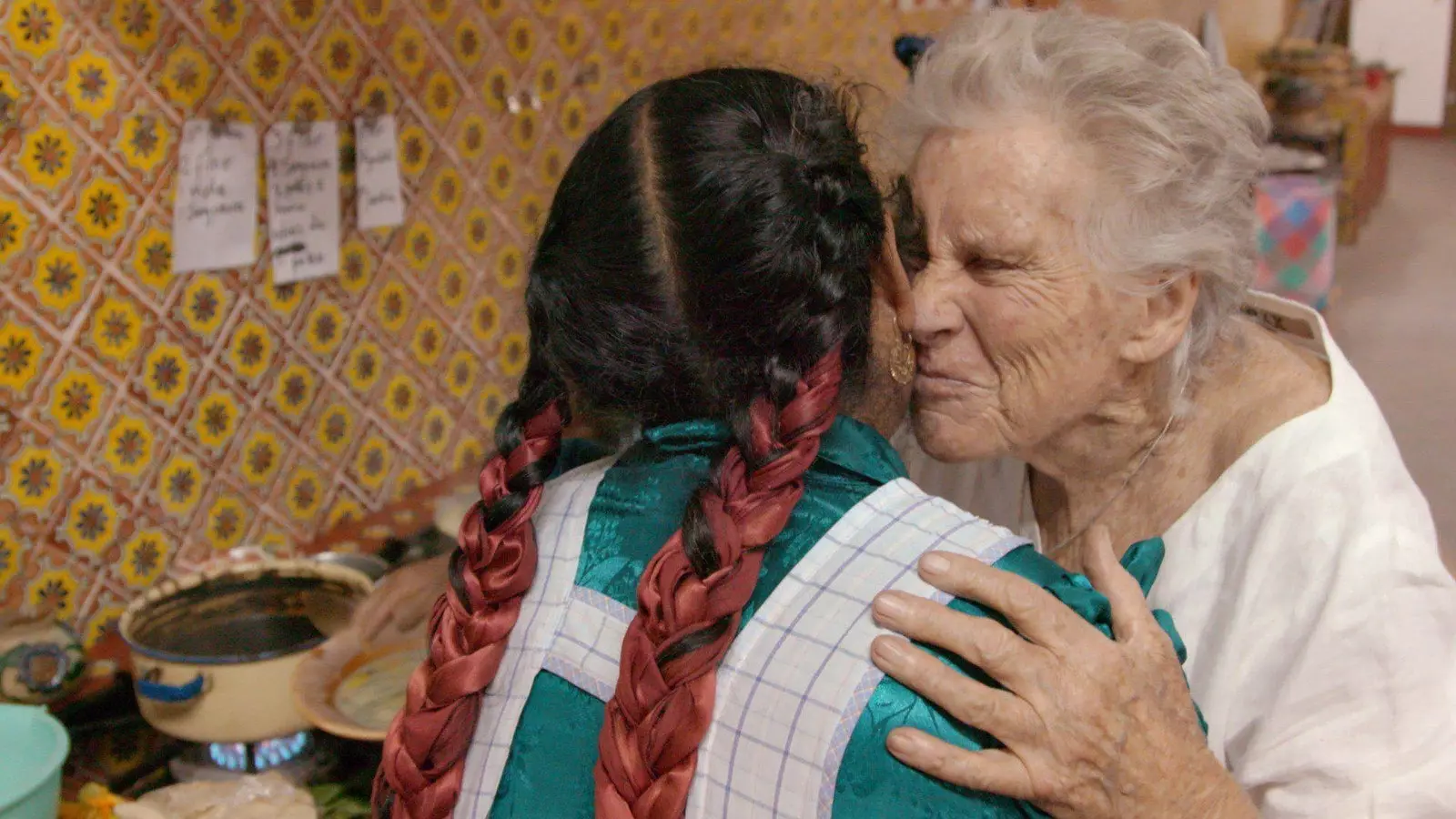
Diana Kennedy
CARMEN ALCARAZ DEL BLANCO – ELIZABETH ROBINS PENNELL
Carmen is one of those people who have the ability to see the trees and the forest at the same time, to connect everything at the speed of light. Her reflections are able to follow all her vocal cords, with which he conveys the emotion and passion he feels towards women in the history of gastronomy.
She is a humanist, journalist, editor and teacher, and together with Ana Vega Biscayenne she started The Recipe Books , a project to recover those domestic notebooks written by women who inhabited, and continue to inhabit, kitchens and have spent decades beating Poe-style in forgotten drawers. Carmen in the sorority itself (you just have to consult the hashtag #gastronomics to convince you) and inspiration, along with journalist and food writer Yanet Acosta, in this report.
“Since I dedicate myself to the search for gastronomes, there are many who accompany me every day in my writing, in my kitchen and in my fight. One day I was interested in knowing who was behind the name of one of the most amazing bibliographic collections of the Library of Congress , hoping perhaps that it belonged to a bored and rich collector. My surprise was great when I discovered that she was Elizabeth Robins Pennell ”, comments Alcaraz.
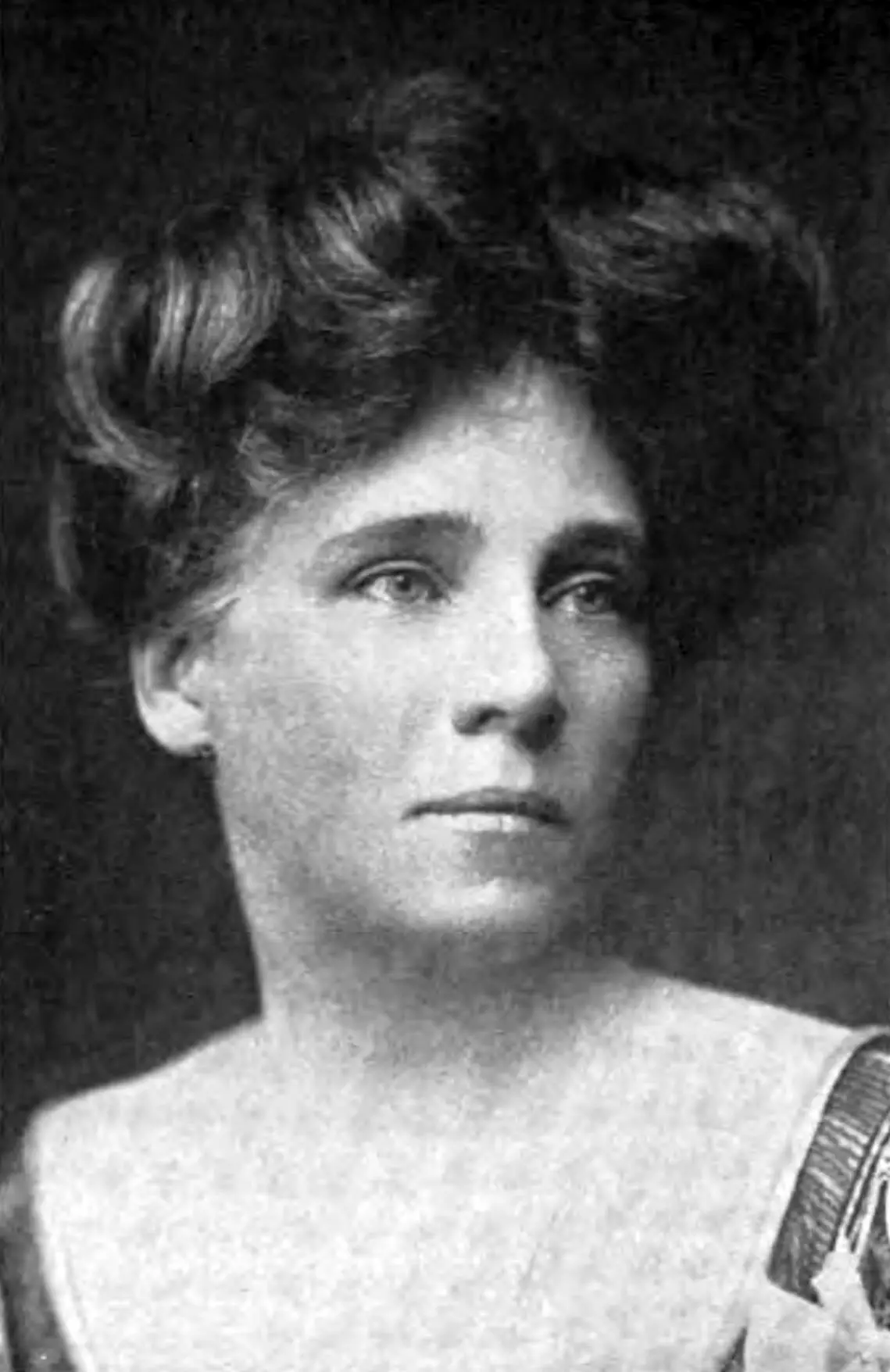
Elizabeth Robins Pennell
As she explains to us, Robins Pennell (1855-1936) she was a pioneering author of gastronomic columnism as we understand it today – her culinary opinion pieces ended up being compiled in The Delights of Delicate Eating - but at the same time “a writer whose versatility, curiosity and intelligence allowed her to write about travel, art and even compose important memoirs such as that of Mary Wollstonecraft, whom today, March 8, many will remember as one of the mothers of the movement , besides that of Mary Shelley”.
Unfortunately, the voice of Robins Pennell it got lost . “No editor considered her interesting in the 20th century and thus the first gastronome to sing hers‘ gastronomic self ’was forgotten. Poetic justice resides in the fact that it was her books, those cookbooks and home economics treatises that she took such good care of her, that finally helped her name not to be erased”.
In her lyrics, Carmen Alcaraz del Blanco she plants the seed of the feminist revolution as Robins Pennell planted her own "by saying that she was hungry and that gluttony should be considered more of a virtue than a sin." Together, they make a team.
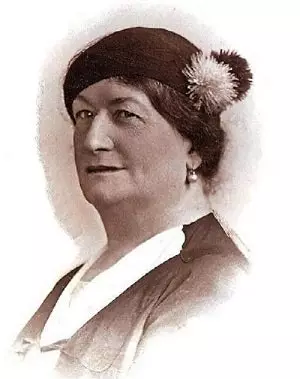
Marchioness of Parabere
CLAUDIA GONZÁLEZ CRESPO – MARQUISE OF PARABERE
She has taught at Harvard, she is a professor of the master's degree in gastronomic journalism The Foodie Studies and, after being in the ranks of elBullifoundation together with Ferran Adrià for three years as researcher and editor of the volume of bullipaedia titled what is cooking, Claudia Gonzalez Crespo He has launched long live the mouth , a studio for the creation and dissemination of gastronomic projects that works in Spain and in the United Kingdom and Ireland. She couldn't have come up with a better name: you only have to listen to this Cantabrian speak to know that gastronomy can be as exciting as it can hide the trace of who we are.
culture and identity They are the axes from which Claudia reflects on gastronomy, preferably with a vermouth in hand, because she is “ very aperitif” (which she demonstrates in her encounters with multidisciplinary agents that she broadcasts through Instagram). And this is precisely how she tells us from Cork that she also knew about entrepreneurship the Marchioness of Parabere, María Mestayer de Echagüe : “A lady who starts cooking to see if her husband eats more at home, then she leaves him in Bilbao to go to Madrid and opening a restaurant at the outbreak of the Civil War and at the age of sixty. Tell me that is not being an entrepreneur!” she exclaims.
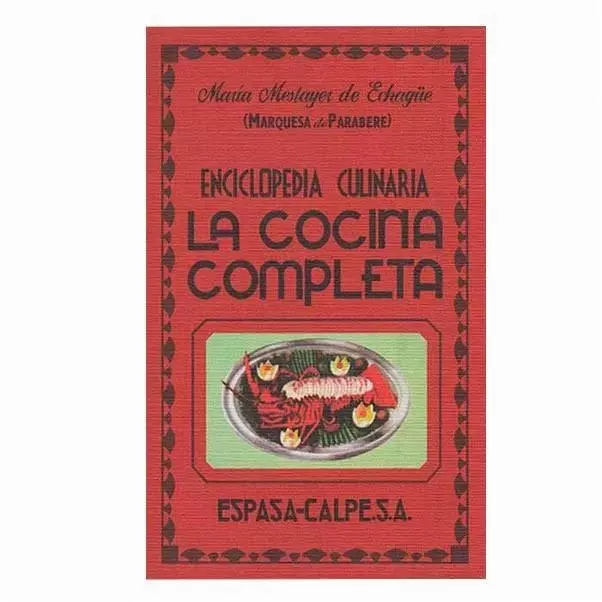
'The full kitchen'
The Marchioness of Parabere wrote the full kitchen , one of the reference works of Spanish cuisine. Composed of two volumes that she began to write starting from the sweet World, This work was followed by other specialized volumes on preserves, hors d'oeuvres … “Even today they remain unpublished six of the twelve volumes of the culinary encyclopedia that she set out to write at the end of her life and that she could not finish before she died”, laments Claudia.
“She knew how to make the kitchen a vehicle for her own personal and professional growth . She started from culinary practice, but she also worked demonstrating other skills such as writing recipes, training, designing and starting up a business… It is as if there had been several Marquesas in the same woman”. And she concludes: “ I look a bit like this. But in a millennial version! ”. A toast to (with) her.
HELENA VAELLO - VICTORIA ADRADOS IGLESIAS
She has had a catering in which, according to her, she cooked and cooked and cooked and learned the fundamentals of the sector . She has been a member of the Food Trend Watchers team Food Mirror and has co-directed a restaurant consultancy, but what Helena Vaello always returns to is the communication in which she was trained. Enjoy, she says, “ making sure that the message reaches us truthfully, beautifully... and to the point ”. She is part of the project The Recipe Books and she manages, among others, the communication of the Remirez de Ganuza winery in the Rioja Alavesa.
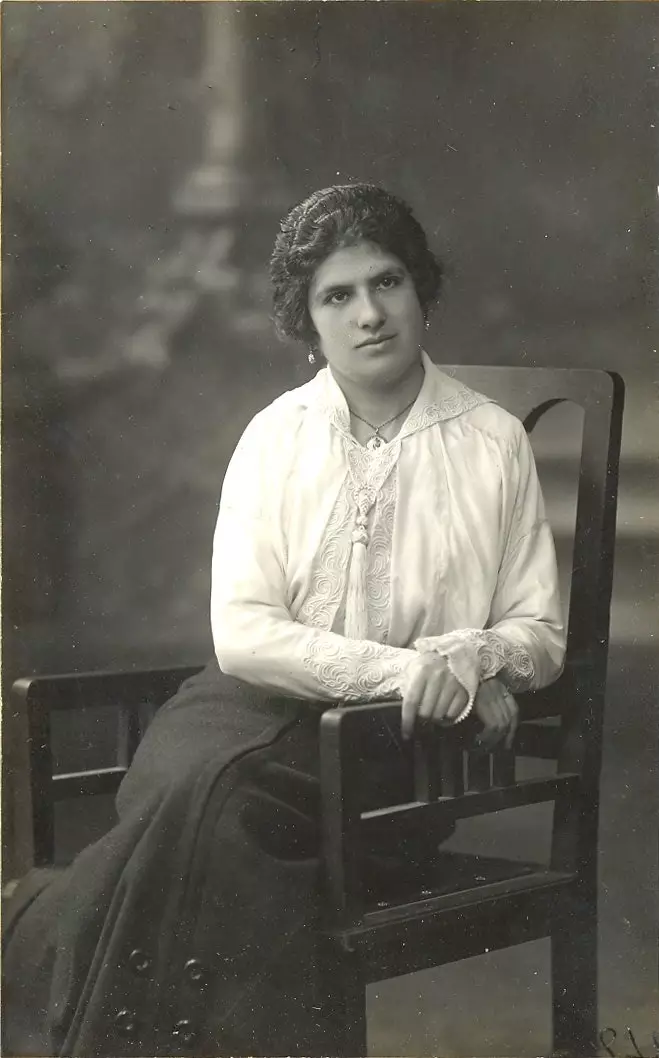
Victoria Adrados Iglesias
When we ask her about any of her references, she does not tell us about Emilia Pardo Bazán or Luisa Carnes , something that she could well have done as a member that she is of the Madrid Academy of Gastronomy . She tells us about Victoria Adrados Iglesias, a woman "who dedicated herself to a basic task: feeding, making sure at the beginning of the 20th century that the smallest and most disadvantaged could, in addition to being educated at school, be properly nourished."
Victoria Adrados she was the first inspector -woman, of course- of Primary Education in the province of Salamanca and for that reason she starred in many headlines in the Salamancan press. However, she was also for something else: "She was always clear that school canteens were a fundamental piece of education," Helena tells us, " and she herself said that school should be an extension of the family for children”.
Adrados not only supervised the schools, but also managed, according to the press of the time, "school canteens, wardrobes, vacation camps, nurseries or the 'drop of milk', an institution created to remedy the problems of malnutrition and high Child mortality". “ I admire her for it ”, confesses Vaello. “ Oh, and she's my great-grandma”.
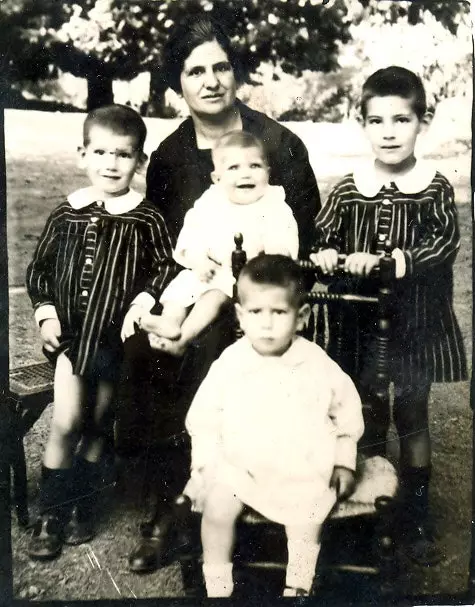
Victoria Adrados Iglesias
INMA GARRIDO – ELENA SANTONJA
Being March 8, to Inma Garrido - gastronomic journalist who signs pieces on products, producers, history, customs, restaurants and of course, Jerez , in media such as El Comidista, The Objective or El Español - the first gastronome that comes to mind is the presenter of the legendary television program Red-handed: Elena Santoja.
Thanks to Santonja, an Inma barely a meter tall discovered concepts such as ‘Le Cordon Bleu’, ‘majar’ or ‘sherry wine’ “While she was watching TV without really understanding what she was seeing, but unable to stop looking. I don't know if there weren't any other alternatives or if watching cooking seemed like a good plan back then. ”, she jokes.
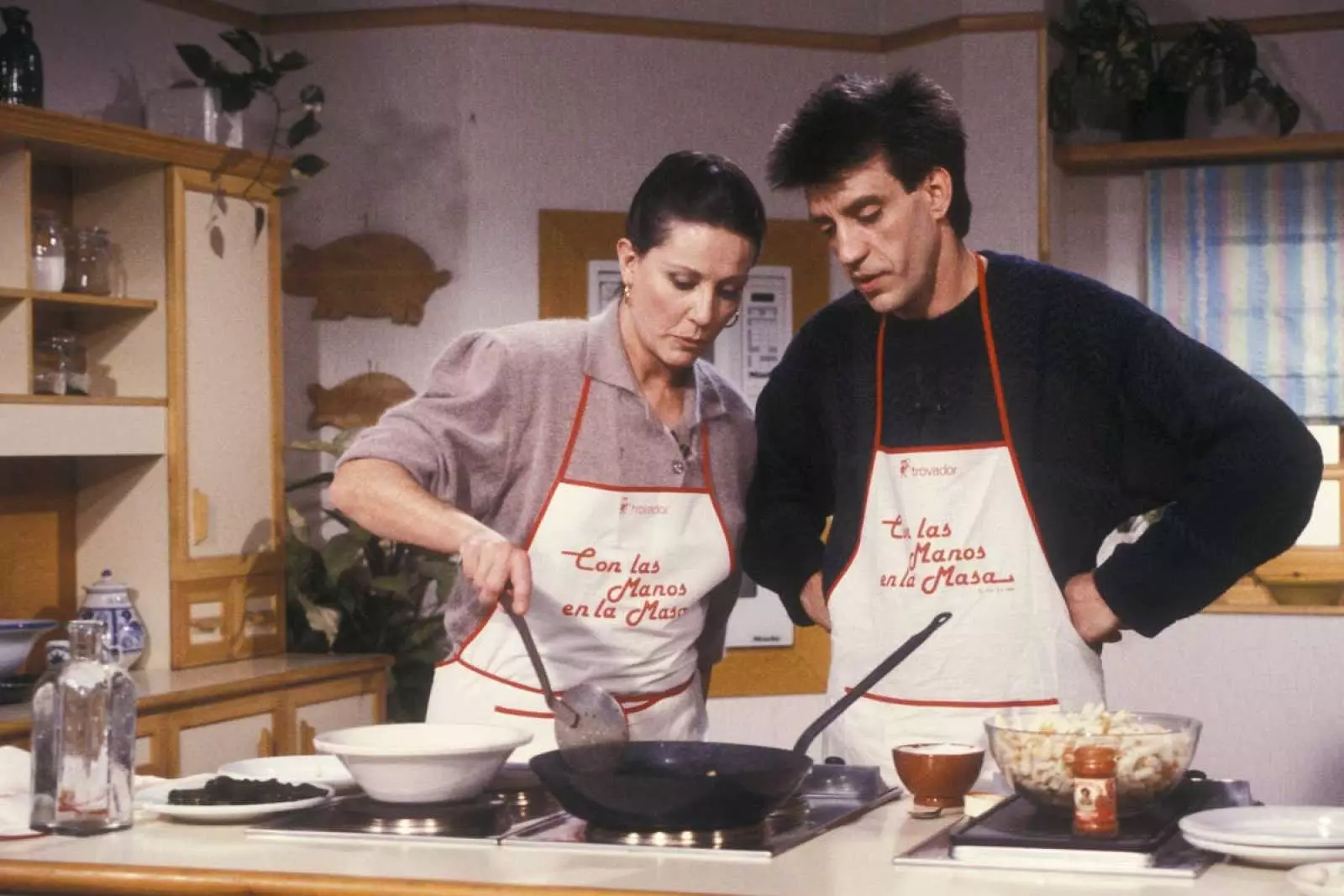
Elena Santonja
“Santonja was a pioneer” , he affirms and continues: “In the first chapter, which of course I don't remember, but I have seen later, he made a complete declaration of intentions: With his hands in the dough he intended to inform (and he talked about products, healthy food, food that fed many mouths with the least economic effort), relate (relate people as products are related in a recipe) and “ save everything that can still be saved in the Spanish geography ”. In those first minutes she quoted Emilia Pardo Bazán to say that cooking is culture and never frivolity ”. What more can you ask of a gourmet.
MARÍA ARRANZ – ARLENE VOSKI AVAKIAN AND BARBARA HABER
If you have ever read María Arranz in El País, Condé Nast Traveler, Freeda, Monocle Travel Guides, Madriz Magazine, Vein o Perdiz or had in the hands fuet , that gastronomic publication that she helped to found and that has broken molds in Spain, it is easy to assume that what interests this gastronomy journalist and editor it's not the high-end restaurants, but everything that is knotted at the intersections of the kitchen.
From Betty Crocker to Feminist Food Studies: critical perspectives on women and food is the title selected by Arranz, a collection of essays edited by Armenian-American** food history and women's studies researcher Arlene Voski Avakian** and food historian Barbara Haber . “This work was one of the first in affirm that the relationship of women with the kitchen and food could also show forms of rebellion and resistance to that patriarchal oppression , as well as constituting a means through which women expressed their creativity when other fields were closed to them”.
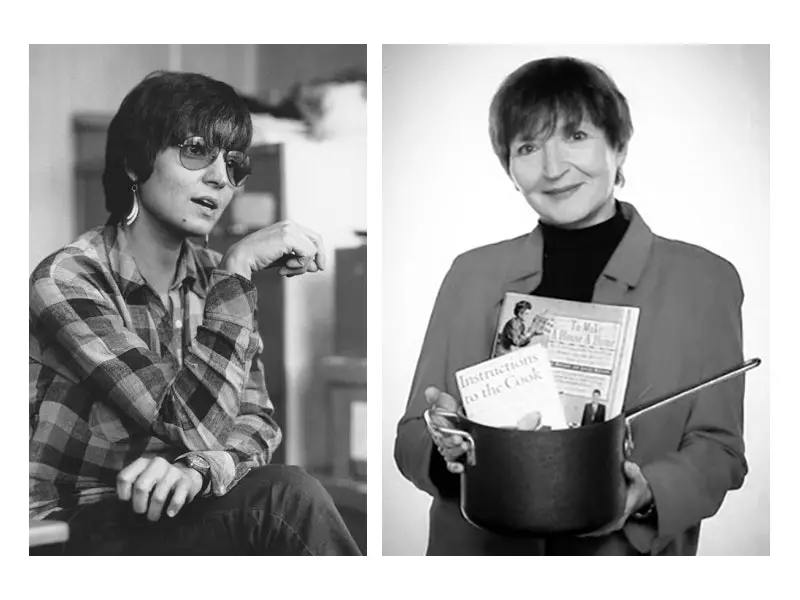
Arlene Voski Avakian and Barbara Haber
The journalist says of this title that it is one of her books that she “they changed her life”, which helped her “to apply feminist theory to the world of cooking” . An encounter that we are grateful for reading Arranz, who has spent the last decade focused on investigating this relationship also in the workshops and talks that she organizes, such as the cycle of literary picnics Read with the mouth. eat with the eyes.
ROSA LLOPIS – JULIA CHILD
They say that she is one of the best translators specialized in gastronomy in this country. The translations of it from New World Sourdough of Bryan Ford or of My Mexico City Kitchen by Gabriela Cámara for which she fully immerses herself in the world of each author, but also the precision of her gastronomic interpretations that do not misunderstand a term and that manage to transmit Will it be her voice too? all the spirit of whom she speaks.
She also has an extensive curriculum in interpreting in the field of immigration (she has accompanied refugees in her legal, social and health epic) and perhaps for this reason the translations of it are something more than a simple exchange of signifiers , just as the dishes are not a simple ingestion of food.
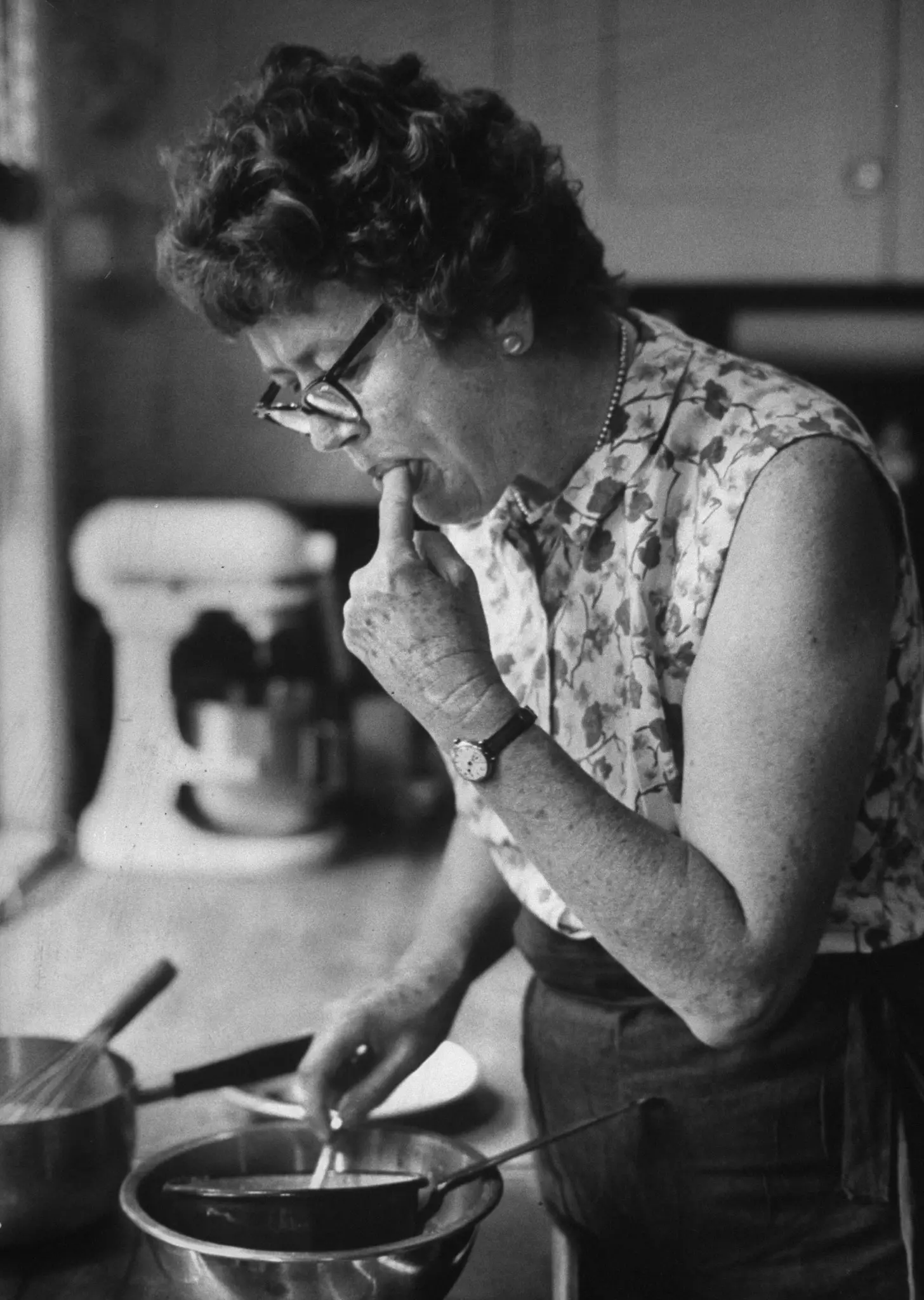
Julia Child
Rosa chooses Julia Child because she says that, like her, “ she was an outsider in the world of gastronomy and, at the same time, a passionate . She was not a professional cook, she never worked in a restaurant kitchen and, even so, she was able to democratize gastronomy and teach cooking to an entire country”.
she met The art of French cuisine circumstantially, when she was performing in haute cuisine classes and she needed to get the basics of cooking. One of her teachers recommended it to her -it is easy to imagine Rosa's emotion when she had that volume in her hands for the first time- and since then, Julia Child has become a reference: " Seeing that someone like her was able not only to make a name for herself, but also to become a milestone in the history of cooking for me had intense value.”.
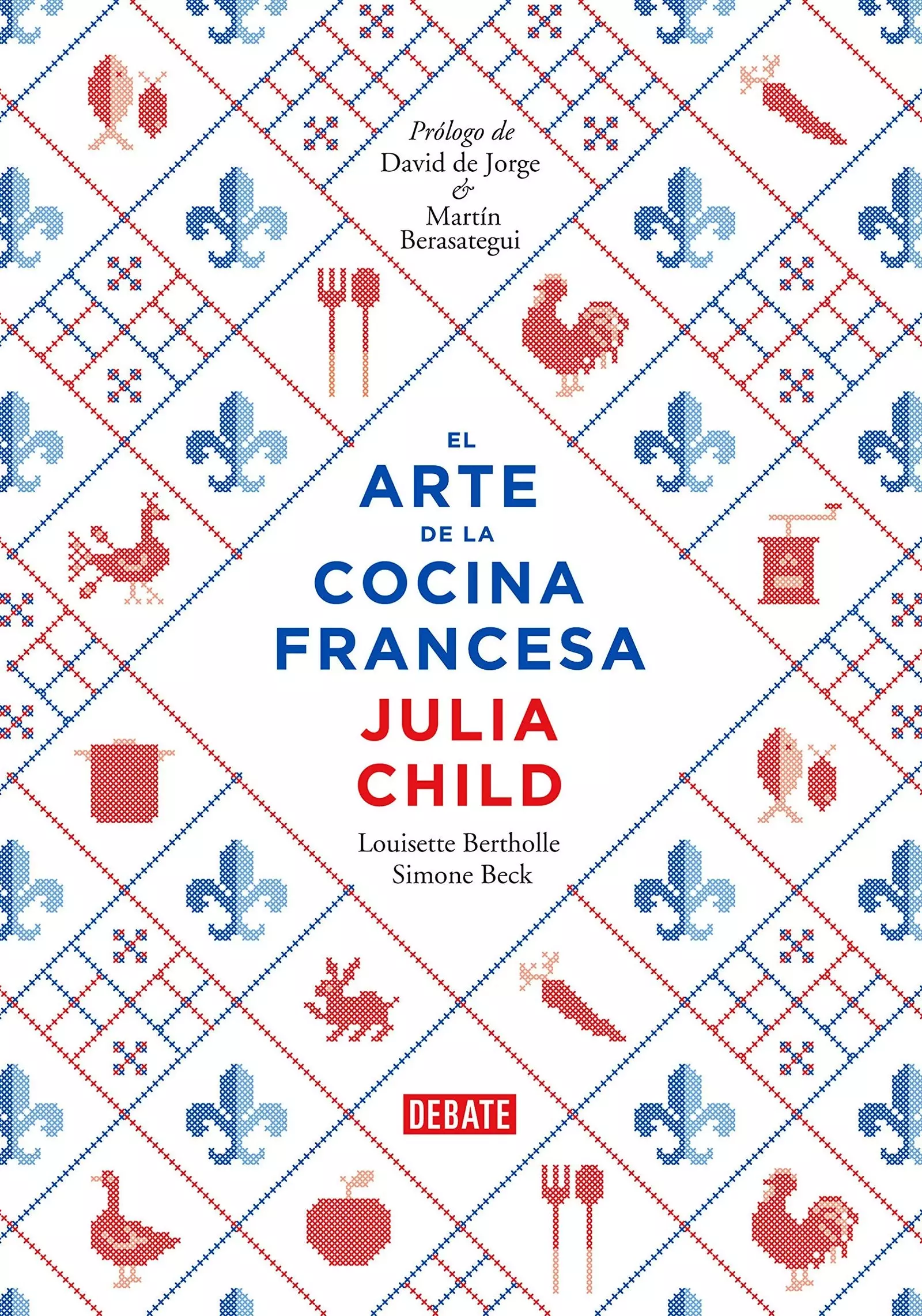
'The art of French cuisine', by Julia Child
MILLER ROSE - BUWEI YANG CHAO
to the words of Pink Miller you can find them in The Comidista, Traveler and NEO2 , in her work as an editor in editorials such as Abalon Books or Col&Col or in the program and gastronomic portal Bestial of RTVE that, in addition, she scripts. She the same she writes enthusiastically about sugared almonds or about Bulgarian and Armenian dishes as she goes through classic Barcelona taverns now run by citizens of Chinese origin to offer a moving story about them that everyone should read.
From China is also the gastronome that Rosa discovers for us, Buwei Yang Chao , the first female doctor to practice Western medicine in China who, according to Rosa, "arrived in Cambridge (USA) together with her husband, the linguist Yuen Ren Chao , and she found herself cooking every night for a group of Chinese teachers, “at a time when fresh ginger was still rare. Let's see how I manage!, she must have thought”.
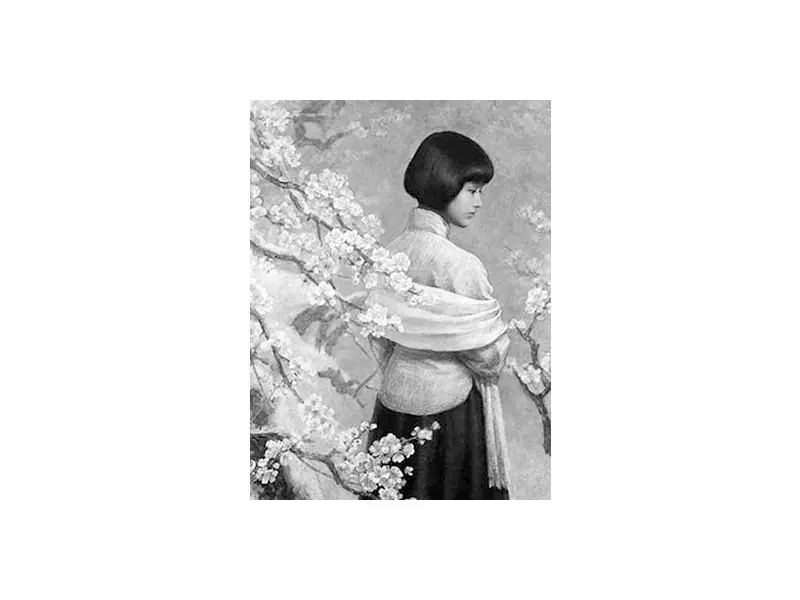
Buwei Yang Chao
And she managed. What she did not know that group is that "what they were eating was also the germ of a book, How to Cook and Eat in Chinese, one of the most important cookbooks published in North America" that, as Rosa tells us, Buwei Yang Chao said he was ashamed to have written it : “She was supposed to dedicate herself to medicine and not to something that was perceived as vulgar and as domestic as cooking. Little did I know of the importance that its publication would reach, that one day fried rice, Peking duck, stir-fried noodles or jiaozì would be one of the most consumed cuisines in the US.
Interested as Rosa is in the confluence between migration and gastronomy and food politics, this choice is not surprising: “Buwei Yang Chao managed to make the cuisine of his native land overcome the racism of the time associated with everything Chinese and became an essential part of America's food landscape." It seems like a good time to talk about her, “because while we eat xialongbao so happily, a new wave of hatred towards Chinese does not stop growing around the world for stupidly linking the country and its culture to Covid-19.” Amen.
SANDRA LOZANO – BARBARA WHEATON
To Doctor in Archeology and head of the history of gastronomy project of elBullifoundation , Sandra Lozano, the first gastronome that comes to mind when we ask her is Barbara Wheaton, a historian like her, author of the book savoring the past on French cookbooks from 1300 to 1789 and, for decades, the curator of the cookbook collection of the Schlesinger Library at Harvard University.
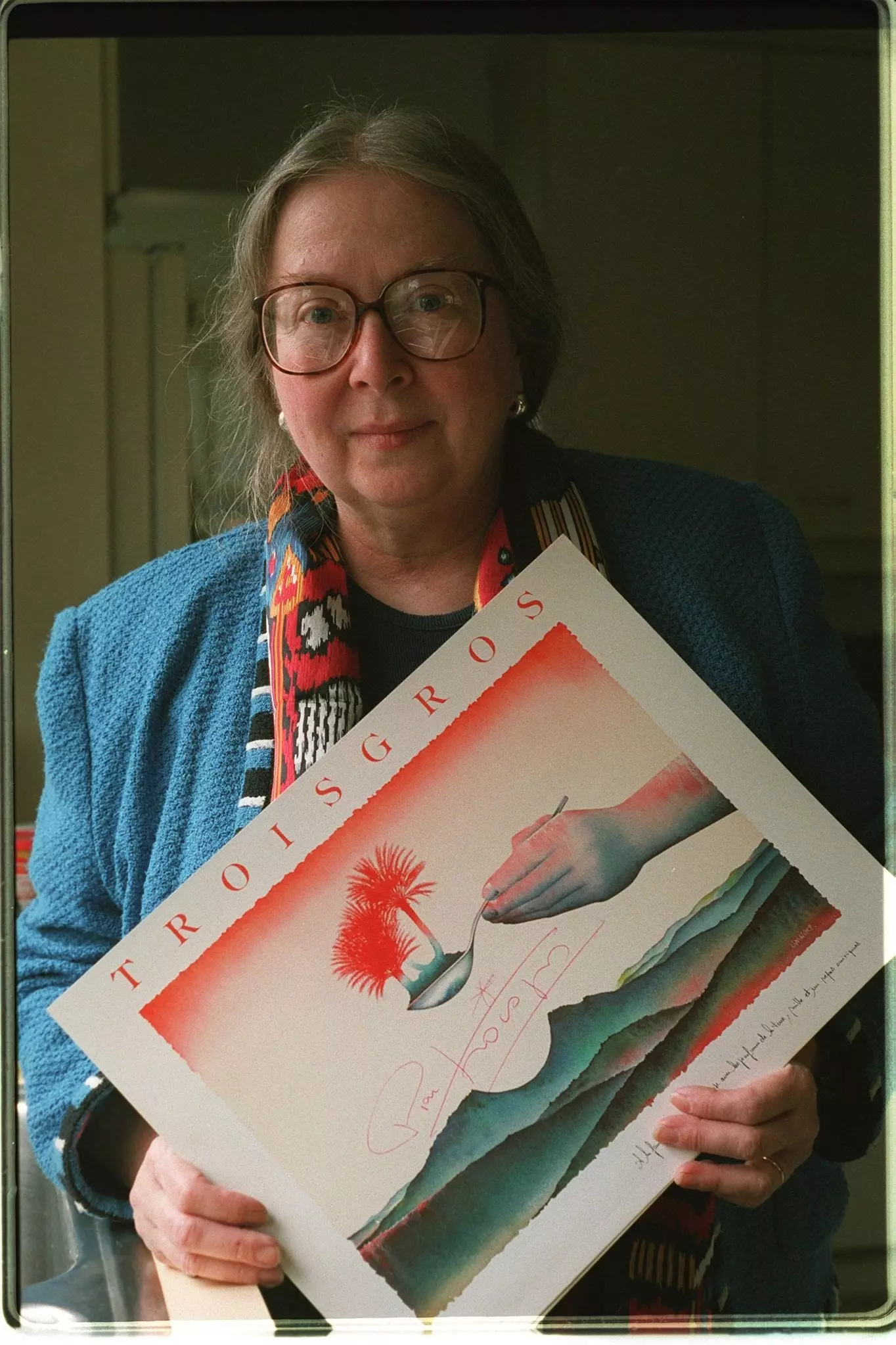
Barbara Wheaton
Wheaton, now retired, worked on the design of a huge database encoding the recipes of hundreds of historic cookbooks from Europe and America. “ Her commitment and her vision with this database makes her a true pioneer of data science in the culinary world. either. Imagine someone who in the 60's, without having a computer or programs to help her , had the brilliance of understanding the potential of having the data ordered and within reach to be able to study and analyze the history of cooking”, he explains. “ If he had been a young man connected to the technological world of the 70s and interested in another subject -not the kitchen-, this lady would have ended up signed by Google and now her project would have more repercussion, for sure”, she reflects.
Lozano had the opportunity to communicate with her by mail as a result of an investigation into the concept of popular cuisine that she was carrying out with Ferrán Adriá: "She seemed to me one of those inexhaustible wise women who also has a good humor that escapes her in each sentence of the keyboard. When I found out about her, she was introduced to me as “a librarian” , but in reality it has been much more than that and I hope that among all of us we remember her work as she plays. Anyway: Barbara Wheaton Forever!”.
and all of you.
There are more: María G. Aguado, Natalia Martínez, María Nicolau, Julia Laich, Yaiza Saiz, Sasha Correa… #Gastronomes of today and tomorrow.
